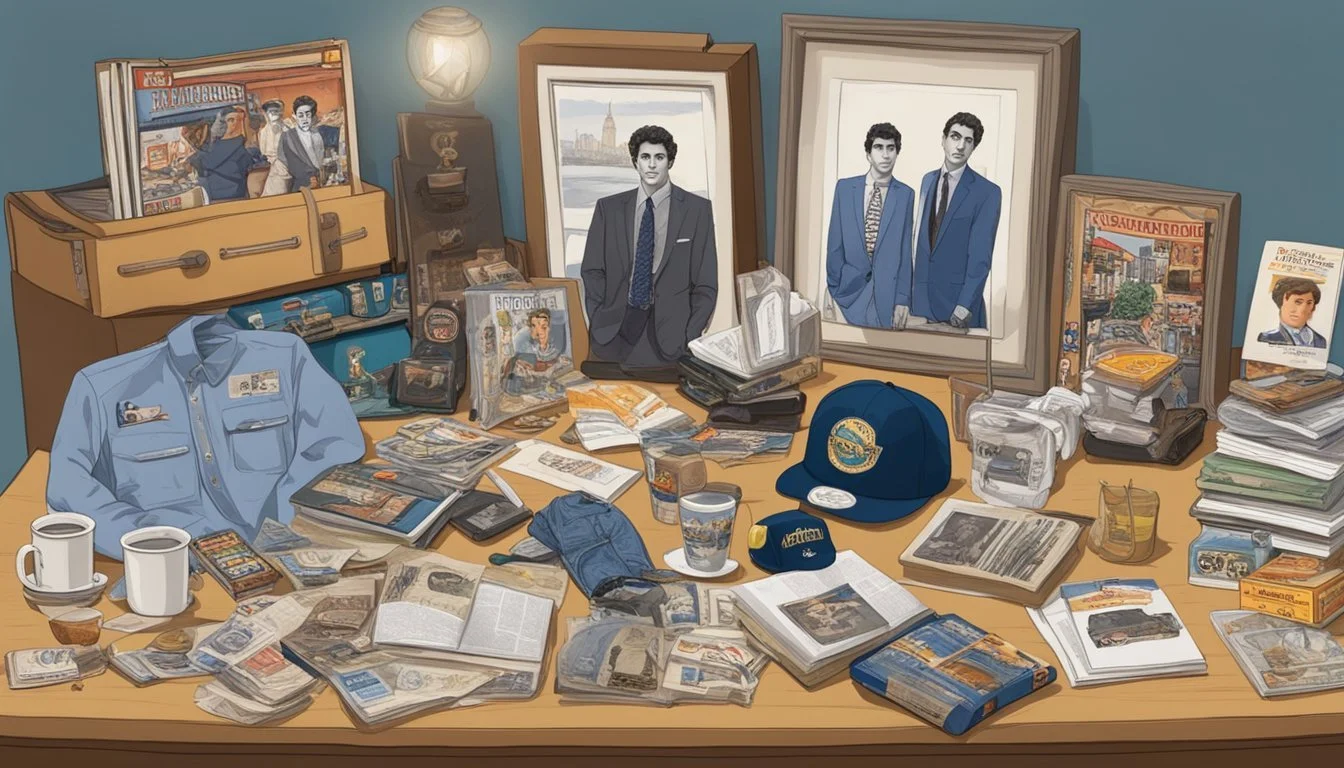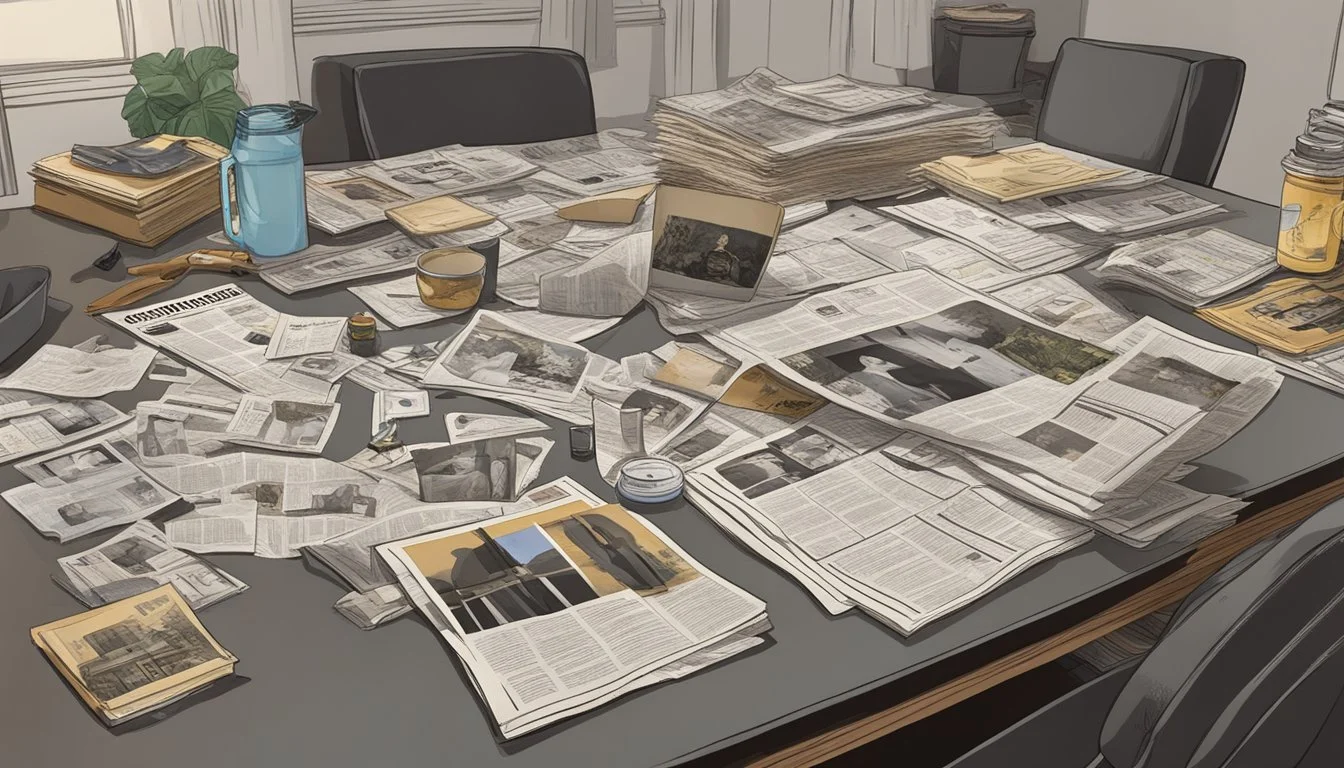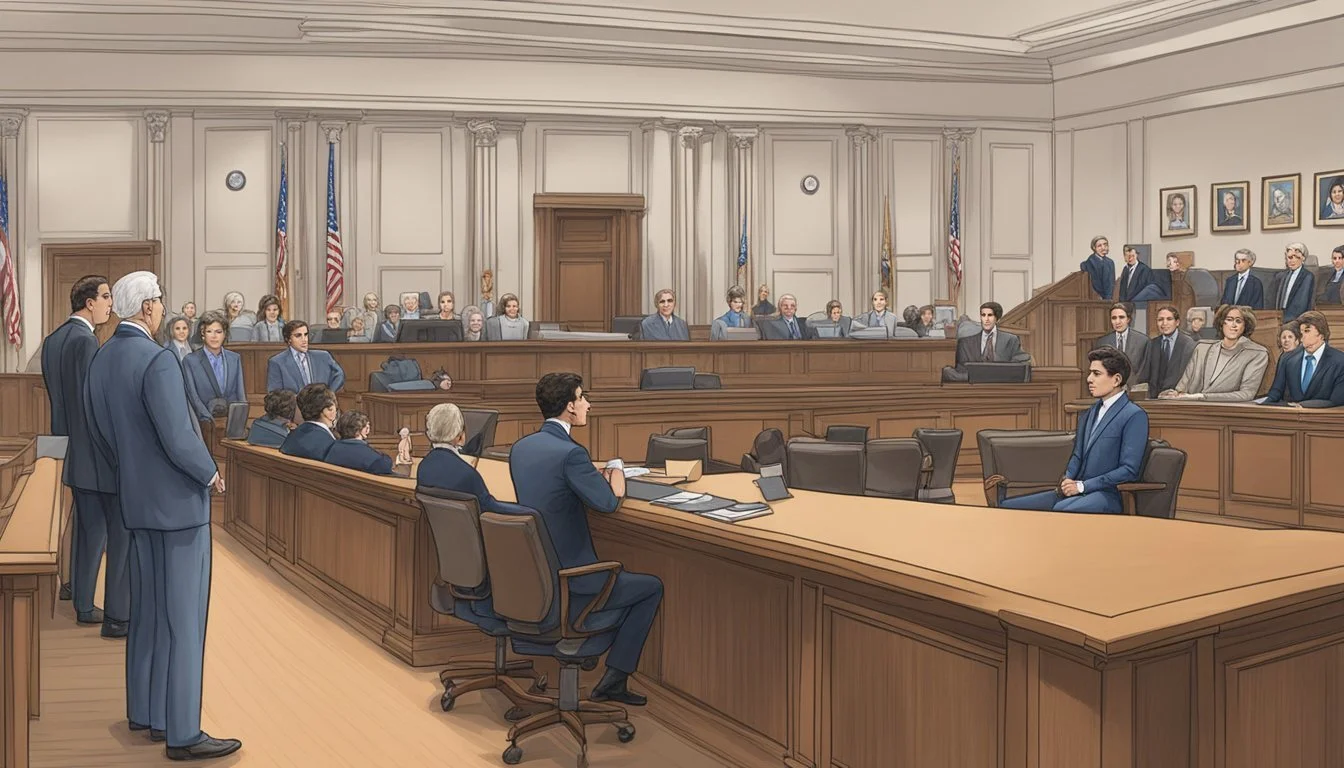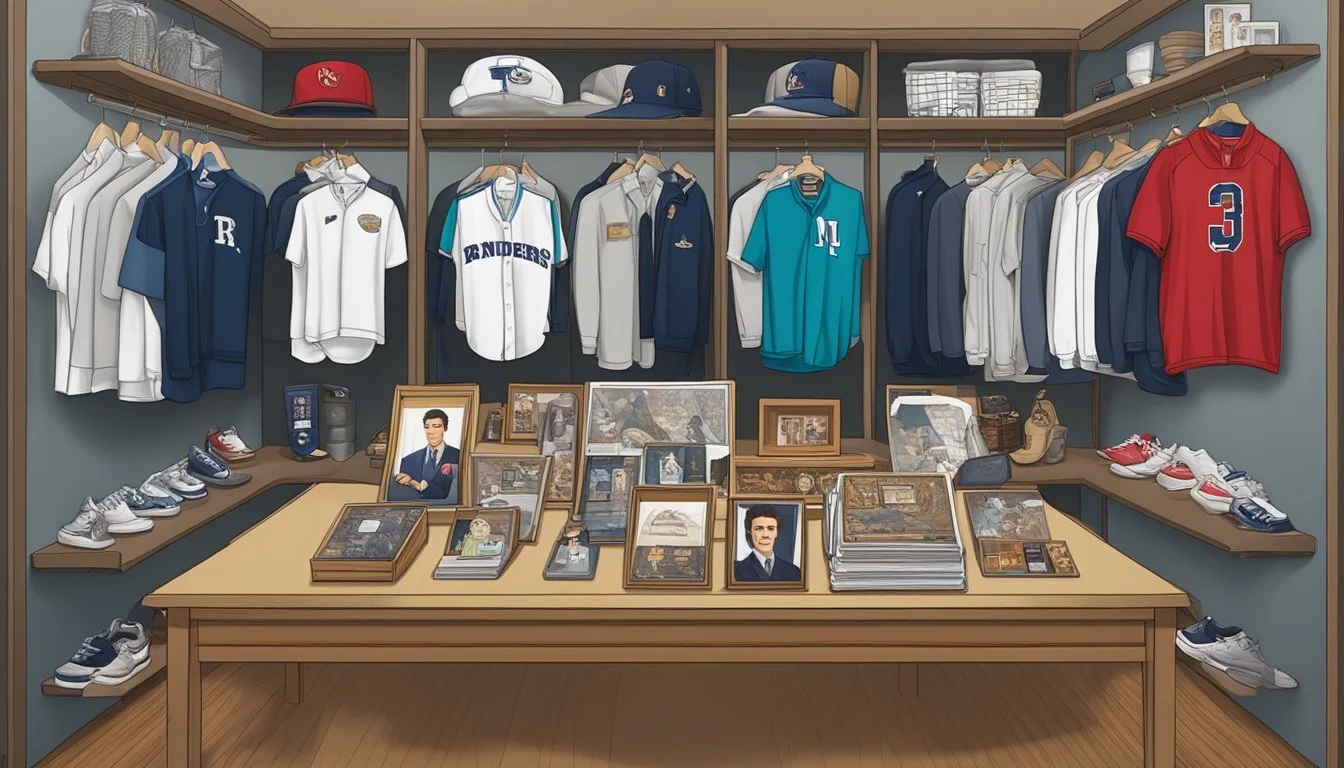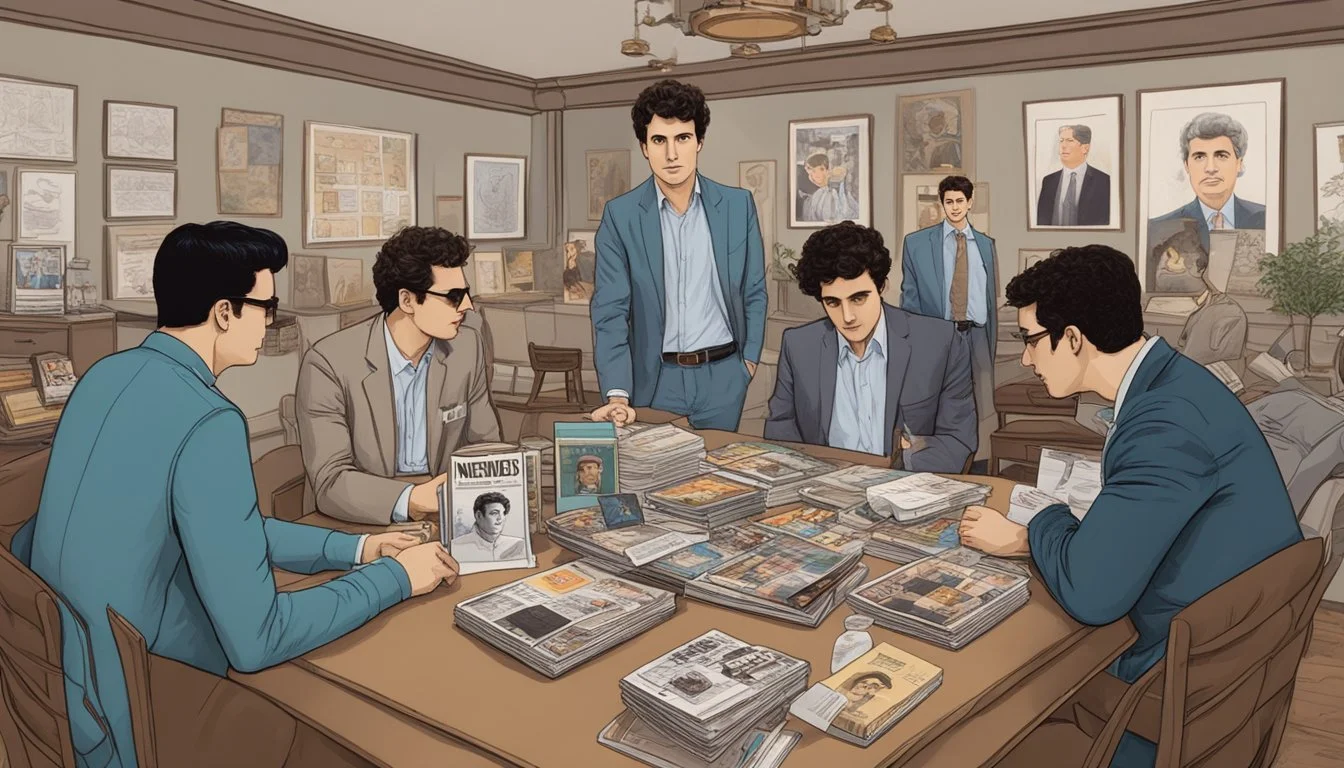The Ethics of Menendez Brothers Merchandise and Memorabilia
Examining the Boundaries of True Crime Consumption
The Menendez brothers case continues to captivate public interest decades after the shocking murders of their parents. Netflix's recent series has reignited discussions about this infamous true crime saga. As media attention grows, so does the market for Menendez brothers merchandise and memorabilia.
The sale of items related to the Menendez case raises complex ethical questions about profiting from tragedy and the boundaries of public fascination with true crime. Supporters argue that such merchandise allows people to engage with history and explore societal issues. Critics contend that it exploits victims and trivializes serious crimes.
The debate extends beyond the Menendez case to broader concerns about true crime media and its impact on society. As attitudes toward criminal justice evolve, some argue for reexamining past cases, while others worry about glorifying violence. The ethical implications of Menendez brothers merchandise reflect these larger cultural conversations about crime, punishment, and entertainment.
Background of Menendez Family
The Menendez family's story is marked by contrasts between outward success and hidden turmoil. Their rise to prominence and subsequent downfall captivated public attention due to the shocking nature of events that unfolded within their Beverly Hills mansion.
The Menendez Household
Jose and Kitty Menendez established their family home in an affluent Beverly Hills neighborhood. The mansion projected an image of wealth and achievement, fitting for Jose's status as a successful entertainment executive. Despite the luxurious facade, the household atmosphere was tense and complicated. Jose's demanding personality and high expectations created pressure within the family dynamic. Kitty struggled with depression and substance abuse issues, further straining relationships. The contrast between public perception and private reality became a central theme in understanding the Menendez family story.
Early Lives of Lyle and Erik Menendez
Lyle and Erik Menendez grew up in privileged circumstances. Born in 1968 and 1970 respectively, the brothers attended elite schools and had access to numerous opportunities. Lyle showed promise in tennis, while Erik excelled academically. However, their upbringing was not without challenges. Both brothers faced intense pressure to succeed from their father. They also experienced emotional difficulties, with reports of behavioral issues and therapy sessions. These early years laid the foundation for the complex relationships and events that would later unfold.
The Influence of Jose and Kitty Menendez
Jose Menendez, a Cuban immigrant who fled during the revolution, built a successful career in the entertainment industry. His drive and ambition shaped the family's lifestyle and expectations. Kitty Menendez, a former beauty queen, focused on maintaining the family's social status. Their parenting style combined high expectations with emotional distance. Jose's influence was particularly strong, as he pushed his sons to excel while allegedly exhibiting controlling and abusive behavior. The parents' actions and attitudes played a crucial role in the family dynamics that ultimately led to tragic consequences.
Overview of the Menendez Brothers' Crime
Lyle and Erik Menendez shocked the nation when they murdered their parents in their Beverly Hills mansion on August 20, 1989. The brutal killings, subsequent investigation, and high-profile trial captivated public attention for years.
The Night of the Murder
On that fateful evening, Jose and Kitty Menendez were watching TV in their living room. The brothers entered, armed with shotguns, and fired multiple rounds at their parents. Jose was shot in the back of the head, while Kitty sustained numerous wounds to her face and body.
After the killings, Lyle and Erik staged a break-in and called 911, claiming they had returned home to find their parents dead. The brothers' initial grief appeared genuine to responding officers.
Investigation and Crime Scene Details
Police initially suspected a mafia hit due to Jose's business dealings. However, inconsistencies in the brothers' stories raised suspicions.
Key evidence included:
Shotgun pellets and cartridges found at the scene
Blood spatter patterns inconsistent with the staged break-in
The brothers' lavish spending in the months following the murders
Investigators also noted the absence of valuables taken from the home, contradicting the robbery motive.
Public Reaction and Media Coverage
The case garnered intense media scrutiny, fueled by the family's wealth and the shocking nature of the crime. News outlets provided extensive coverage of the investigation and subsequent trial.
Public opinion was divided. Some viewed the brothers as cold-blooded killers, while others sympathized with their claims of abuse. The trial, televised on Court TV, became a national spectacle.
The case sparked debates on family dynamics, wealth, and the justice system. It also raised questions about the media's role in high-profile criminal cases.
Trial and Legal Proceedings
The Menendez brothers' trial was a high-profile case that captivated the nation. It involved complex legal strategies, controversial evidence, and intense media scrutiny.
Legal Strategy and Defense Claims
The defense team, led by Leslie Abramson, pursued a controversial strategy. They claimed the brothers acted in self-defense due to years of sexual and emotional abuse by their parents. This approach aimed to gain sympathy from the jury and justify the killings.
The defense presented testimony from psychologists and family members to support their claims of abuse. They argued that the brothers feared for their lives, believing their parents would kill them to prevent the alleged abuse from being exposed.
Erik's confession to his therapist played a crucial role in the case. The defense fought to keep this evidence out of court, citing doctor-patient confidentiality.
Prosecution's Case and Evidence
Prosecutors portrayed the brothers as cold-blooded killers motivated by greed. They presented evidence of the brothers' lavish spending spree after the murders, arguing this demonstrated a lack of remorse.
Key pieces of evidence included:
Shotgun shells matching those used in the killings
Testimony from friends about the brothers' behavior before and after the murders
Financial records showing the family's wealth and the brothers' inheritance
The prosecution challenged the abuse claims, presenting witnesses who described the Menendez family as normal and loving.
Jury Deliberations and Verdict
The first trial in 1993 resulted in hung juries for both brothers. This outcome shocked many observers who expected quick convictions.
In the retrial, which began in 1995, the judge limited testimony about alleged abuse. After months of testimony and deliberation, both juries found the brothers guilty of first-degree murder.
The verdict came in March 1996. Lyle and Erik Menendez were sentenced to life in prison without the possibility of parole.
The case continues to spark debate about issues of abuse, self-defense, and the justice system's handling of complex family dynamics.
Aftermath and Sentencing
The Menendez brothers faced severe consequences for their actions, spending decades behind bars. Recent legal developments have brought their case back into the spotlight, raising questions about potential changes to their sentences.
Life in Prison
Erik and Lyle Menendez were sentenced to life in prison without the possibility of parole in 1996. They were initially housed separately but were reunited at Richard J. Donovan Correctional Facility in San Diego in 2018 after 22 years apart.
The brothers have adapted to prison life, participating in various programs and activities. Erik has worked as a telephone operator and tutor, while Lyle has been involved in prison education programs.
Both have maintained contact with the outside world through letters and occasional interviews, sharing their experiences and perspectives on their case.
Potential Retrial and Sentencing Changes
In 2023, Los Angeles County District Attorney George Gascón announced plans to seek resentencing for the Menendez brothers. This decision was based on new laws recognizing the impact of childhood trauma and abuse on criminal behavior.
If successful, the resentencing could potentially lead to parole eligibility for Erik and Lyle. The DA's office has cited the brothers' young age at the time of the crime and their history of alleged abuse as factors supporting this decision.
The move has sparked debate about the justice system's approach to cases involving complex family dynamics and trauma.
Continued Legal Battles
The Menendez brothers and their legal team have pursued various avenues for appeal and sentence reduction over the years. Their efforts have included:
Filing habeas corpus petitions
Seeking sentence modifications based on changes in California law
Appealing to higher courts for review of their case
These ongoing legal battles have kept the Menendez case in the public eye, prompting discussions about criminal justice reform and the treatment of offenders with traumatic backgrounds.
The potential resentencing represents a significant development in their long-running legal saga, with the outcome likely to have far-reaching implications for similar cases.
Cultural Impact
The Menendez brothers case has deeply influenced media, entertainment, and public discourse around true crime. It continues to spark debates about family dynamics, violence, and criminal justice.
True Crime Fascination
The Menendez murders fueled the public's appetite for true crime content. Netflix's "Monsters: The Lyle and Erik Menendez Story" reignited interest in the case, drawing millions of viewers. This series, along with earlier Court TV coverage, shaped how many perceive the brothers and their motives.
True crime podcasts, books, and documentaries frequently revisit the case. It serves as a prime example of patricide and fratricide, intriguing audiences with its complex family dynamics and shocking violence.
The brothers' youthful appearance and wealthy background added to the sensationalism. Their trial became a media spectacle, setting the stage for future high-profile court cases.
Media Representations
Ryan Murphy's involvement in "Monsters" brought a new artistic interpretation to the story. The series delved into the brothers' claims of abuse, presenting a sympathetic portrayal that sparked debate.
Earlier films and TV shows often focused on the brutal nature of the crime and the brothers' apparent lack of remorse. More recent portrayals tend to explore nuanced perspectives on their motivations and family history.
These media depictions have significant power to shape public opinion. They raise questions about the ethics of dramatizing real-life tragedies for entertainment and profit.
Social media has given the case new life, with younger generations discovering and discussing it online. This has led to renewed calls for the brothers' release, demonstrating the lasting impact of media narratives on public perception.
Ethical Considerations of Commercialization
The commercialization of true crime cases raises complex moral questions. Merchandise and media related to the Menendez brothers case exemplify tensions between public interest, victim sensitivity, and profit motives.
Merchandise and Memorabilia
True crime merchandise tied to the Menendez brothers case presents ethical dilemmas. T-shirts, mugs, and other items featuring the brothers' images or case details can be seen as trivializing tragic events. Critics argue such products disrespect the victims and their families. Supporters claim the merchandise allows engagement with an important cultural moment.
Some see a moral obligation to limit profiting from violent crimes. Others view it as protected free speech. The ethics often depend on how products are designed and marketed. Items focusing on the victims or justice system may be viewed differently than those glorifying the perpetrators.
Role of Public Perception and Sensationalism
Media portrayals shape public views on commercialization ethics. Documentaries like "Monsters: The Lyle and Erik Menendez Story" walk a fine line. They aim to inform but risk sensationalizing violence for ratings. Ethical media should prioritize factual reporting over dramatic narratives.
Public fascination with true crime can normalize commercialization. As interest grows, more products emerge to meet demand. This cycle raises questions about societal values. Critics worry it desensitizes people to real suffering. Supporters argue it spurs important conversations about criminal justice.
Ultimately, consumers play a key role in setting ethical boundaries through their choices. Individual values determine what's considered acceptable or exploitative in true crime commerce.
Legal and Ethical Responsibilities
The sale of Menendez brothers merchandise raises complex legal and ethical questions. These issues involve the rights of convicted criminals, the impact on victims' families, and the broader societal implications.
Rights of Victims and Criminals
Convicted criminals like the Menendez brothers retain certain rights, including control over their likeness and intellectual property. However, these rights can be limited by laws designed to prevent profiting from crimes. "Son of Sam" laws in many states restrict criminals from financially benefiting from their notoriety.
The victims' families also have legal protections. They may pursue civil litigation to prevent the sale of unauthorized merchandise or seek compensation from profits. Some jurisdictions have enacted laws specifically addressing crime-related memorabilia sales.
Impact on Families Involved
The sale of Menendez brothers merchandise can cause significant emotional distress to the victims' families. It may feel like a violation of their loved ones' memories and a trivializing of their loss. The families of Jose and Kitty Menendez have expressed opposition to such merchandise.
For the Menendez brothers' extended family, the situation is complex. Some may view merchandise as exploitative, while others might see it as a way to support Lyle and Erik. The $14 million inheritance originally at stake in the case adds another layer of financial and ethical considerations.
Merchandise sellers have a moral obligation to consider the impact on all affected families. Balancing profit motives with ethical responsibilities remains a challenging issue in this case.
Contributors and Influences on the Public Narrative
The Menendez brothers case attracted attention from various influential figures and media outlets. These key players shaped public perception and understanding of the events surrounding the murders.
Influential Figures and Experts
Dominick Dunne, a prominent crime writer, played a significant role in shaping the narrative. His extensive coverage of the trials in Vanity Fair magazine brought national attention to the case. Dunne's compelling storytelling and analysis influenced public opinion.
The brothers' therapist, Dr. Jerome Oziel, became a central figure in the legal proceedings. His taped sessions with Erik and Lyle Menendez were crucial evidence, sparking debates about patient confidentiality.
Tennis coach Jeff Farrell provided insights into the brothers' lives before the murders. His testimony offered a glimpse into their privileged upbringing and family dynamics.
Media and Entertainment Industry's Role
Television coverage of the trials captivated audiences nationwide. Court TV's gavel-to-gavel broadcast allowed viewers to follow the case in real-time, shaping public perceptions.
True crime documentaries and made-for-TV movies further popularized the Menendez story. These productions often dramatized events, potentially influencing public opinion.
Social media platforms have revived interest in the case. Kim Kardashian's tweets about the brothers in 2017 reignited public discussions, demonstrating the enduring fascination with the Menendez saga.
News outlets continue to revisit the case, offering new perspectives and analysis. These ongoing media portrayals contribute to the lasting cultural impact of the Menendez brothers' story.


